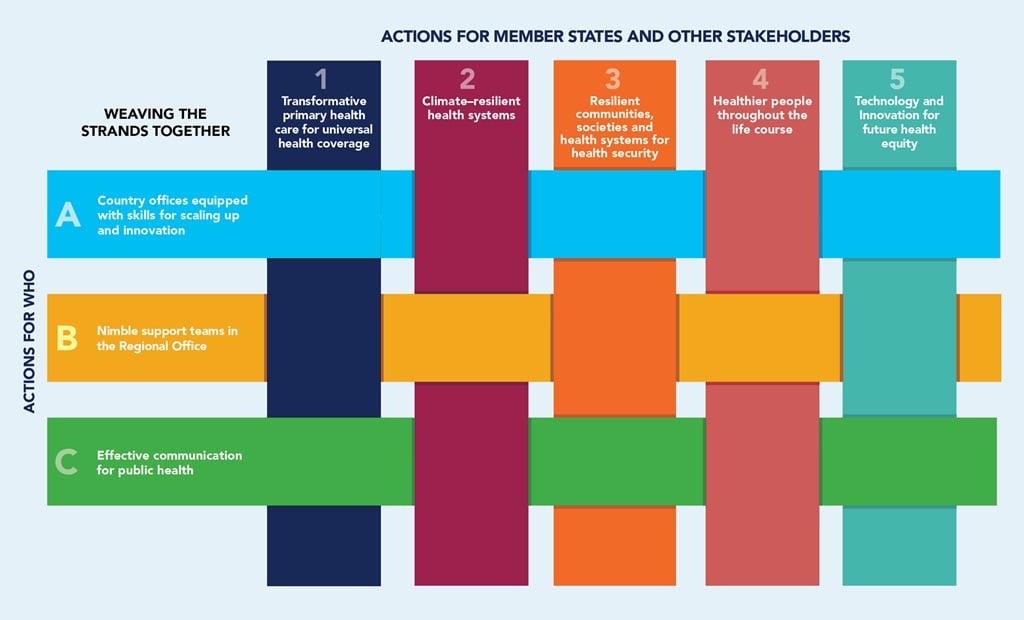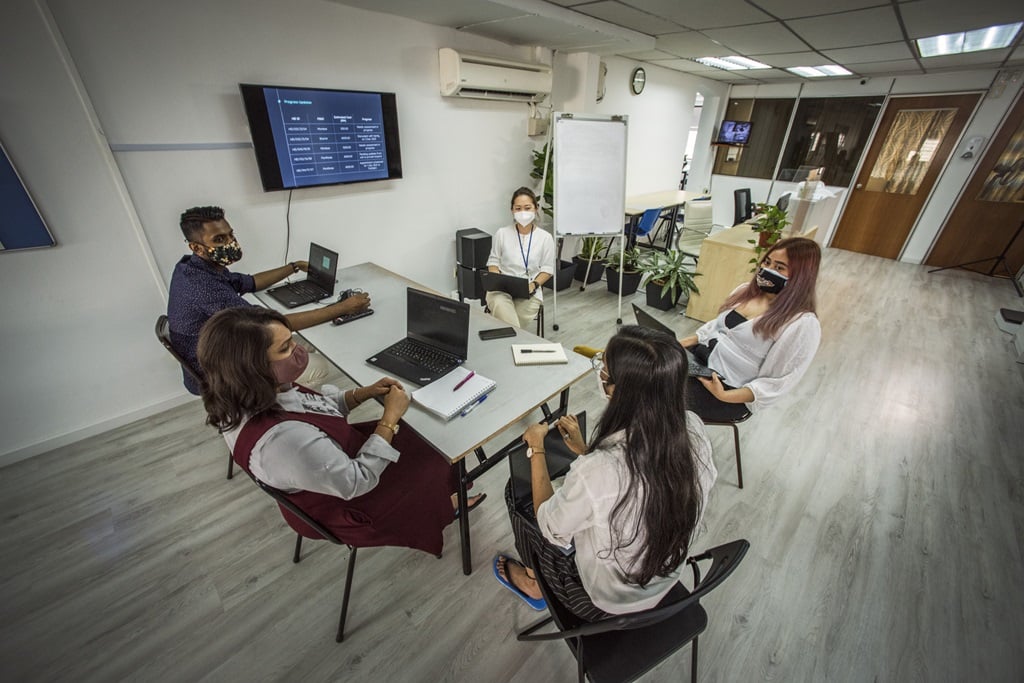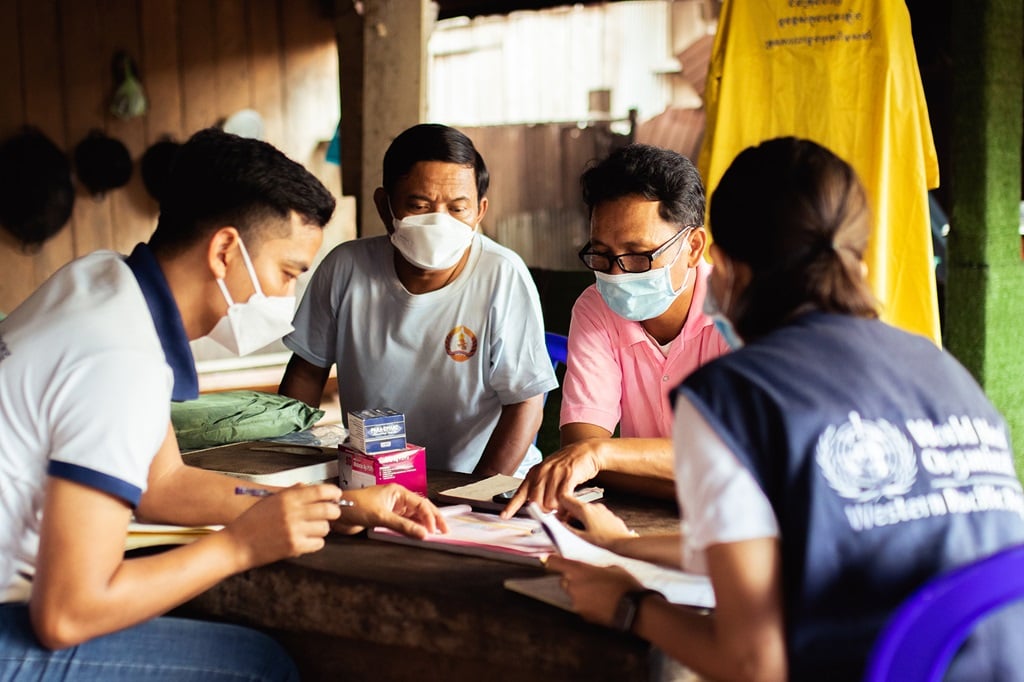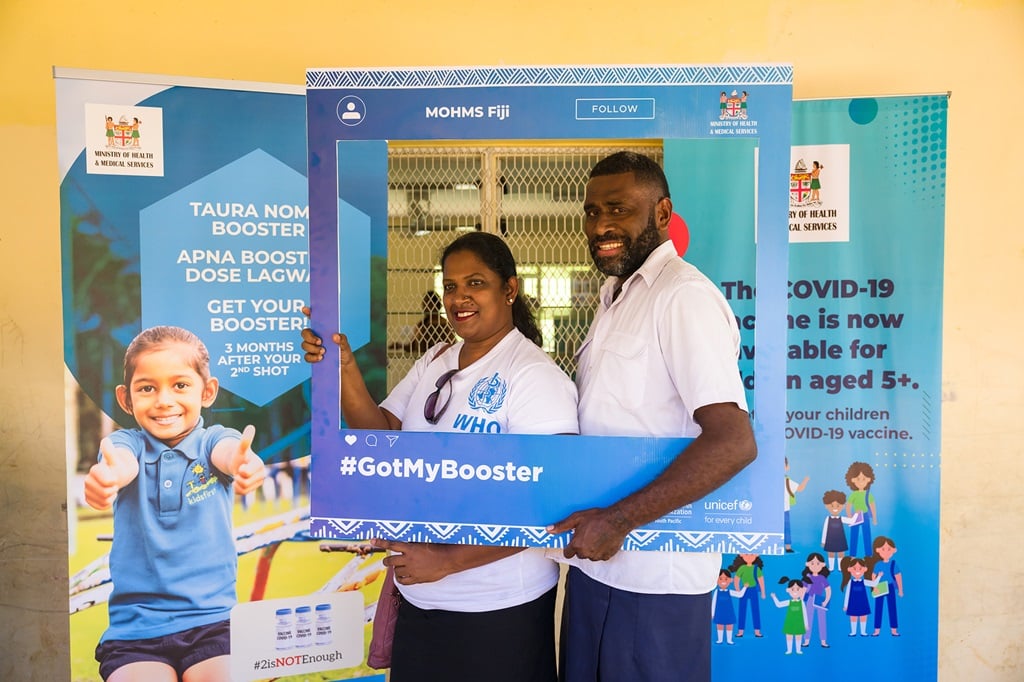
Anolyn Lulu (seated left) is an Olympic athlete, mother, and champion for healthy living in Vanuatu.
Weaving Health for Families, Communities and Societies in the Western Pacific Region (2025−2029)
Throughout Asia and the Pacific, families and communities weave mats as part of their culture. The woven mat has traditionally been the setting for many events, from everyday life to milestones. In many ways, mats represent our life course.
Each society has different types and ways of weaving for different purposes. Each person brings their own pandanus – pieces of palm-like trees and shrubs – to contribute to weaving the mat.
Our social fabric is threatened by a complex and rapidly changing world: climate change, political tensions, conflict, food supply chain disruptions, worsening economic conditions, and the speed and spread of misinformation on social media, among others.
These rapid social changes have led to a loss of identity, and alienation from culture and traditions for some groups, making it harder for some communities to cope with issues that drive ill health.
Achieving universal health coverage and getting the Western Pacific Region back on track to achieve the Sustainable Development Goals – especially in the areas where the Region has stalled – requires a strategy for working with families and communities: social renewal towards health for all.

The Region’s new vision uses the Asia-Pacific cultural icon of weaving a mat to symbolize collective action to improve health and well-being and save lives in the Western Pacific.
This new vision builds on the achievements of the For the Future vision. It is also aligned with the global WHO Fourteenth General Programme of Work, 2025−2028, and country cooperation strategies, collectively bring together our knowledge, wisdom, cultures and experiences to weave a mat of health that will serve the Region’s countries and areas while also strengthening the WHO workforce, promoting a positive workplace and encouraging a community of learning and service to meet the new challenges for public health.
Weaving health for families, communities and societies in the Western Pacific Region...
Health outcomes, like the woven mat, are the result of efforts that require everyone’s contribution.
The visualization of the woven mat illustrates the coordinated and combined workstreams of WHO, Member States, partners and other stakeholders. In the visualization, three horizontal strands represent the work of WHO, while five vertical strands represent actions for Member States and other stakeholders.
Together, these collaborative efforts effectively support and safeguard progress to improve the health and well-being of the Region’s 1.9 billion people.
The work of WHO
WHO priority actions include ensuring that country offices are equipped to facilitate and coordinate vigorous support for policies/programmes to achieve universal health coverage and put the Region on track to achieve the Sustainable Development Goals.
WHO teams in the Regional Office must plan as well as respond to country office requests for support with technical capacity, expertise and partners. WHO will also provide effective communications for public health that brings together the power of science and storytelling with a deep understanding of audiences and how to best reach them.
Actions for Member States and other stakeholders
Member States, in turn, will work with WHO to advance transformative primary health care as the cornerstone for achieving UHC, so that all people have access to good-quality health services without financial hardship. This includes efforts to promote healthier people throughout the life course, empowering families and communities to promote health at all stages of life.
Member States will work with WHO to build more climate-resilient health systems as part of a whole-of-society approach to climate and health. They will work with WHO to foster resilient communities, societies and health systems for health security by engaging people in all settings to be ready for future challenges, including pandemics.
Finally, technology will play an integral role in improving the access and quality of health interventions. Member States will work with WHO to embrace innovations – especially in digital technology and artificial intelligence – to address health inequities while strengthening health information systems to better target efforts to improve health and well-being in the future.
The success of the vision will depend on the mutual accountability of WHO and Member States to drive impact through their work together – with the role of partners helping to improve the quality of WHO support and the impact of collaborative efforts with Member States. These joint responsibilities will be essential to accelerate progress towards achieving the Region’s health priorities and establishing health as a basic human right.
Working together, we can ensure that all people of the Region – whether they live in some of the world’s largest cities or small island developing states – can attain the highest possible level of health and well-being for a brighter and healthier future.

Related links
All for Health, Health for All: investment case 2025–2028
All for Health, Health for All is WHO’s third investment case and has been produced alongside the Fourteenth General Programme of Work (GPW 14) to...
Weaving health for families, communities and societies in the Western Pacific Region (2025-2029): working...
This document sets out thematic priorities for WHO's work in the Western Pacific Region for the next five years to improve health and well-being, and save...





/vison-video.tmb-549v.png?sfvrsn=d4e9180f_1)








